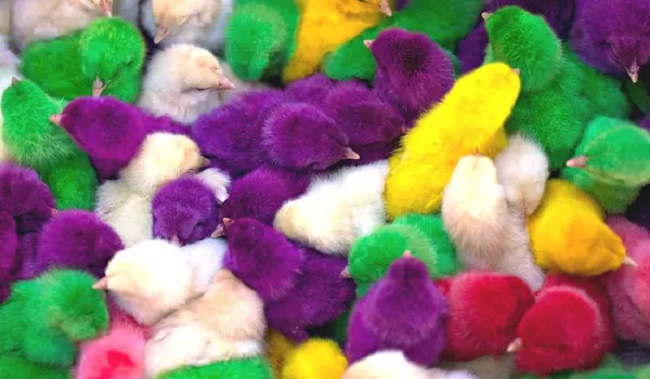The world of chickens is far more diverse than you might think, with a variety of breeds offering a rainbow of colors and patterns. But did you know that there are at least 25 distinct chicken colors?
This comprehensive guide, vet-approved and steeped in poultry genetics, will guide you through the fascinating spectrum of chicken colors.
Whether you’re an enthusiastic backyard breeder, a poultry fancier, or just curious, this detailed information will provide you with a fresh perspective on our feathered friends.

Understanding Chicken Colors
Before we dive into the list of chicken colors, it’s essential to understand that these hues result from genetic factors. Various genes determine the color and pattern of a chicken’s feathers, with some colors being dominant, while others are recessive.
Read Also:
Further complexities arise when these color genes interact, often leading to the delightful variety we see in different breeds.
The 10 Chicken Colors: A Complete List
Here is a list of 10 different chicken color:
1. White
White is a common chicken color. Contrary to what some might think, white-feathered chickens are not albinos. Their feathers lack pigmentation, giving them a pure, clean appearance.
2. Black
Black chickens display an intense depth of color due to a gene called ‘extended black.’ Some breeds, like the Ayam Cemani, have this color throughout their body, including their bones and organs.
3. Red
Red chickens are generally a deep, rich color, seen in breeds such as the Rhode Island Red. The intensity can vary, ranging from light cinnamon to dark mahogany.
4. Blue
Blue chickens are a delightful sight. This color, seen in breeds like the Blue Andalusian, is the result of a dilution gene that turns black into blue.
5. Gold
Gold chickens have feathers that boast a bright, yellowish color. This color is often seen in Golden Laced Wyandottes and Gold Spangled Hamburgs.
6. Silver
Silver chickens have light gray to almost white feathers, which can look particularly stunning when contrasted with darker patterns. The Silver Laced Wyandotte is a classic example of a silver chicken.
7. Partridge
Partridge is a complex color pattern rather than a single color. It features three colors in each feather—typically black, brown, and tan—in a specific pattern. The Partridge Cochin breed is known for this coloring.
8. Lavender (Self Blue)
Not to be confused with blue chickens, lavender or ‘self-blue’ chickens have a dilute gene that gives their feathers a pastel blue or grayish color. Lavender Orpingtons are a breed known for this beautiful hue.
9. Splash
The splash color is a result of the blue dilution gene, but in a double dose. This gives the chickens a mostly white appearance, with ‘splashes’ of black and gray. Splash Marans are a notable example of this coloring.
10. Buff
Buff chickens boast a beautiful, even, orangey-gold color throughout their feathers. The Buff Orpington is a well-loved breed with this color.
Each of these colors adds another dimension to the already diverse world of chicken colors. They all represent unique genetic characteristics and play a role in the beauty and variety we see in different chicken breeds.
Breeding for Color
Chicken color genetics can be a complex but rewarding subject. Understanding how different genes interact can allow breeders to predict the possible colors of their chicks and selectively breed for certain colors or patterns. However, nature always has the potential to surprise, and variations can occur.
The Role of Ear Color
In addition to feather colors, chicken earlobes also vary in color and can hint at the color of the eggs they lay. Chickens with white or pale earlobes usually lay white eggs, while those with red or brown earlobes often lay brown eggs.
However, there are always exceptions to these rules, making chickens wonderfully unpredictable creatures.
Read Also:
Conclusion
The fascinating world of chicken colors stretches far beyond the typical white and brown hues we often see. From the stunning Black Ayam Cemani to the rare Lavender Orpington, each chicken color tells a unique story of genetic inheritance and breed development.
Understanding and appreciating this diversity can truly enhance your poultry-keeping experience, adding a splash of color to your backyard flock or simply deepening your knowledge of these incredible birds.
























